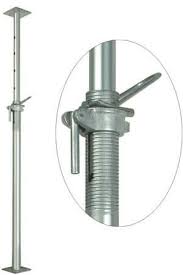اکتوبر . 22, 2024 06:52 Back to list
China H20 Beam Specifications and Dimensions for Construction Applications
Understanding the Dimensions of China's H20 Beam
When discussing construction and engineering materials, the dimensions and specifications of beams are critical components that ensure safety, durability, and functionality. One notable example in modern construction is China's H20 beam, a lightweight, high-performance beam that has garnered attention for its various applications in formwork systems. This article delves into the specifics of H20 beams, focusing on their dimensions, characteristics, and advantages in construction.
What is an H20 Beam?
H20 beams are engineered wooden beams typically used in formwork applications in construction. They are known for their exceptional strength-to-weight ratio, making them an ideal choice for temporary structures during the building process. The H denotes the shape of the beam, resembling the letter H in cross-section, while 20 refers to the approximate height of the beam in centimeters. These beams were originally developed in Europe, but their utilization has spread globally, particularly in China, where demand for efficient construction solutions is on the rise.
Dimensions of H20 Beams
The standard dimensions of H20 beams can vary slightly depending on the manufacturer, but generally, they conform to specific measurements. An H20 beam typically has a height of 200 mm (approximately 7.87 inches) and a width of 100 mm (around 3.94 inches). The lengths of H20 beams can differ significantly, ranging from 2 meters (approximately 6.56 feet) to 6 meters (about 19.69 feet) or more, based on the requirements of the construction project.
The cross-section of the H20 beam is designed to optimize load distribution, providing structural integrity while maintaining a lightweight profile. The unique design, which involves a solid web and flanges, enables the beam to bear significant loads without excessive material use. This is particularly advantageous in reducing overall project costs and enhancing the speed of construction.
Characteristics of H20 Beams
china h20 beam dimensions

One of the distinguishing features of H20 beams is their composition. They are typically made from engineered wood products, often laminated veneer lumber (LVL) or similar materials. This manufacturing process ensures consistent quality and performance, reducing the risk of defects that can impact structural reliability. Additionally, the treatment of the wood helps protect against pests and decay, extending the lifespan of the beams in both temporary and permanent applications.
Another significant characteristic of H20 beams is their lightweight nature. Weighing far less than traditional steel or concrete beams of equivalent size and strength, H20 beams are easier to handle and install, thereby minimizing labor costs and improving safety on construction sites. The lightweight aspect also allows for quicker adjustments and modifications during the erection of formwork, making them a preferred choice among contractors and builders.
Advantages of Using H20 Beams
The utilization of H20 beams in construction comes with a host of advantages. First and foremost, their efficiency in design allows for more economical use of materials, as they require fewer resources compared to other types of beams. This sustainable approach not only lowers costs but also aligns with global sustainability goals.
H20 beams provide exceptional load-carrying capabilities, often accommodating large spans without the need for additional support. This allows for greater architectural freedom, facilitating innovative designs that can enhance the aesthetic appeal of structures. Furthermore, their compatibility with various formwork systems makes them incredibly versatile for use in foundations, walls, and slabs.
The ease of transportation and installation of H20 beams further enhances their attractiveness. With reduced weight, fewer workers are needed to handle and position the beams, leading to improved safety and reduced labor costs. The speed at which these beams can be set up significantly contributes to accelerated project timelines, benefiting both contractors and clients.
Conclusion
In summary, China's H20 beams represent a remarkable advancement in construction materials, combining strength, lightweight characteristics, and versatility. Their standard dimensions make them a reliable choice for various applications, ensuring that building projects are completed efficiently and economically. As construction technology continues to evolve, the adoption of innovative materials like the H20 beam will play a crucial role in shaping the future of sustainable building practices.
-
High Quality Climbing Formwork for High-Rise Buildings & Core Walls
NewsJul.26,2025
-
High Quality Climbing Formwork for High-Rise Building & Core Wall Solutions
NewsJul.25,2025
-
High-Quality Slab Formwork Solutions for Efficient Construction
NewsJul.24,2025
-
High-Quality Wall Formwork Systems for Versatile Concrete Construction
NewsJul.23,2025
-
Climbing Formwork Solutions for High-Rise Construction Efficiency
NewsJul.22,2025
-
Premium Table Formwork for Slab Construction | Reusable & OEM Support
NewsJul.22,2025